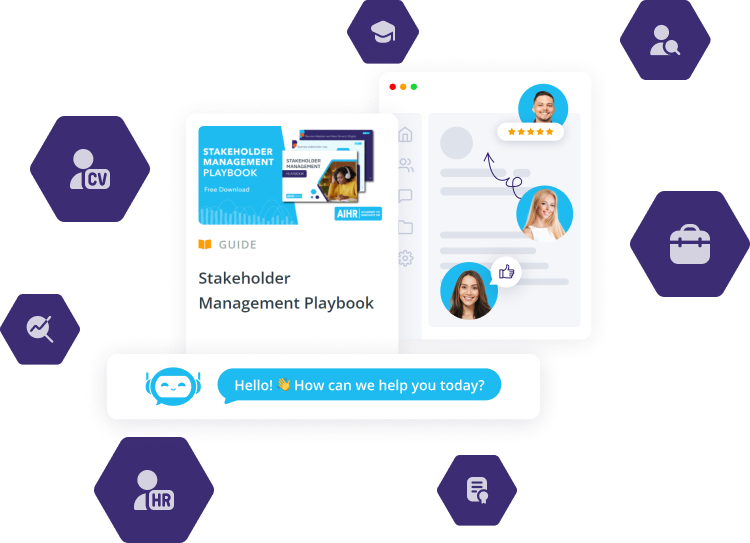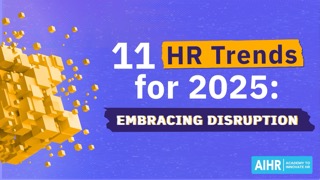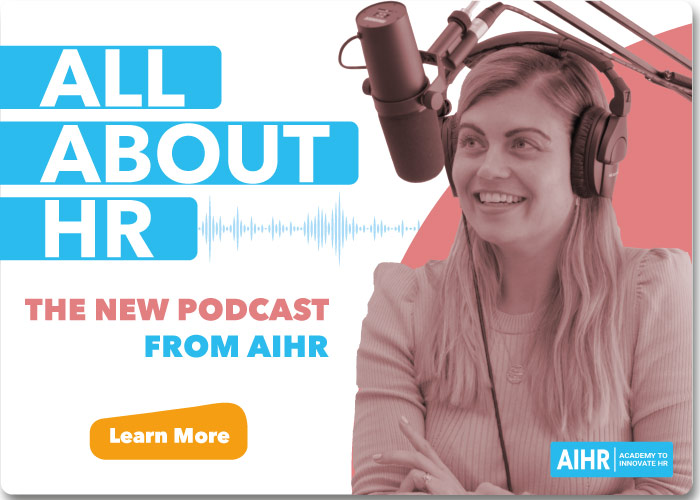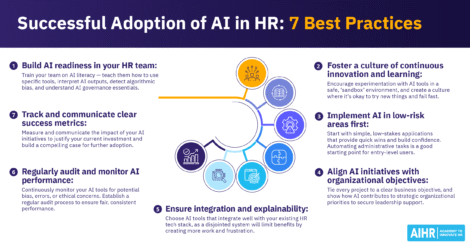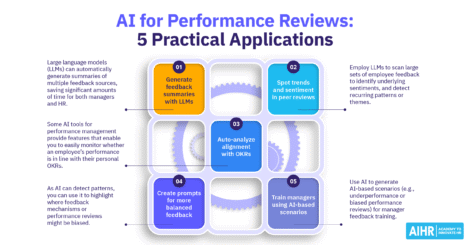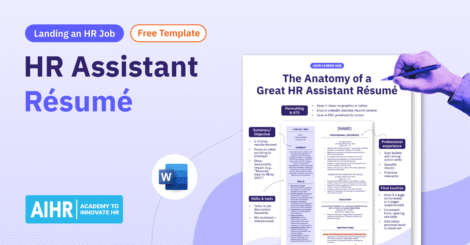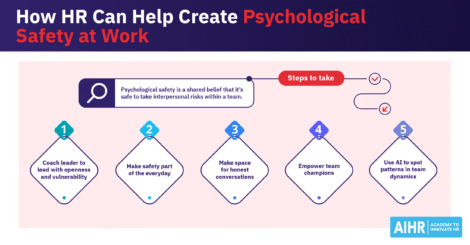As more HR teams turn to generative AI (GenAI) to handle recruiting, communication, and employee experience, choosing between Google’s Gemini and OpenAI’s ChatGPT is becoming a key decision. HR workloads are rising by 10%, budgets are shrinking by 1.5%, and headcount is down by 2% — leaving a 12% productivity gap that AI is expected to close.
Gemini and ChatGPT are leading this shift. ChatGPT serves about 600 million monthly users, with up to 160 million daily. Gemini has grown rapidly to 350 million monthly and 35 to 42 million daily users since late 2024. HR uses both platforms to write job descriptions, screen résumés, draft internal messages, and support learning.
This article examines the similarities and differences between the two platforms, how each of them can serve HR, and how you can choose the right platform for your organization.
Contents
What is Gemini?
What is ChatGPT?
How are ChatGPT and Gemini similar?
How are ChatGPT and Gemini different?
8 ways to use Gemini in HR
9 ways to use ChatGPT in HR
Key takeaways
- Gemini and ChatGPT are both powerful AI tools for HR, but their strengths differ: Gemini excels with long documents and Google Workspace integration, while ChatGPT does well with conversational and multi-modal tasks in Microsoft 365.
- HR teams can use both tools to automate repetitive tasks like drafting job descriptions, summarizing reports, generating surveys, or creating training guides, saving time and improving the employee experience.
- Adoption requires human oversight and planning: privacy, bias, integration, and cost must be managed carefully to get the best results and remain compliant.
- The best way to choose is to test both tools, train your team, and align with your tech stack, ensuring AI becomes a seamless part of your HR strategy.
What is Gemini?
Gemini is Google’s suite of GenAI tools built by DeepMind, designed for personal and business use. In HR, it works directly within Google Workspace — Gmail, Docs, Sheets, Slides, and Meet — making it easy to automate admin tasks, draft content, analyze data, and build training materials.
Gemini 1.5 models are designed to process long documents and complex prompts. Gemini for Workspace is embedded in Google apps, while Gemini Advanced is a paid version with more power and flexibility. It can also connect to company data through Google Cloud for custom HR workflows and analytics.
What is ChatGPT?
ChatGPT is OpenAI’s AI assistant for writing, brainstorming, and automating tasks. The current version, ChatGPT 4o, handles text, voice, and images. It’s available in free and paid plans. HR teams use ChatGPT to write job posts, policies, interview questions, and reports.
Through Microsoft 365 integration (via Copilot), it plugs into tools like Word, Excel, and Outlook, helping automate tasks, summarize content, and support fast decision-making. It acts like an on-demand assistant that saves time and minimizes repetitive work.
How are ChatGPT and Gemini similar?
Although Gemini and ChatGPT differ in ecosystems and specific strengths, they share many core capabilities. Let’s take a look at these similarities in more detail:
Shared capabilities
Both platforms can generate text, summarize documents, draft emails, create interview questions, and develop training or onboarding materials. For HR, this means being able to create job postings, policy summaries, offer letters, and internal communications more quickly, all while maintaining a consistent tone and style.
Enterprise options
Each platform offers enterprise-grade versions designed for large organizations. These plans typically include enhanced security controls, admin oversight, and compliance features, ensuring HR teams can use AI confidently when handling sensitive employee data.
APIs and integrations
Both provide APIs for custom integrations, letting HR connect AI capabilities with existing HRIS platforms, applicant tracking systems (ATS), and workforce analytics tools. This supports automating tasks like candidate outreach, employee feedback analysis, or generating reports directly from HR data sources.
Common HR use cases
Gemini and ChatGPT are equally adept at supporting HR across key areas: recruitment (job descriptions, outreach, screening questions), onboarding (training guides, FAQs), policy creation (drafting and summarizing), and employee communication (newsletters, engagement messages).
Privacy by design
By default, neither tool retains or trains on private business data. Unless configured otherwise, all the information HR teams process through these AI tools remains isolated, giving organizations control over data security and compliance.
How are ChatGPT and Gemini different?
Before choosing between them, it’s important to understand how Gemini and ChatGPT differ in their capabilities for HR teams. Knowing the following differences will help you decide which tool (or combination) best fits your team’s workflows.
Ecosystem integration
– Works natively with Google Workspace (Gmail, Docs, Sheets, Meet)
– Available via Gemini for Workspace and Gemini Advanced
– Integrates with Microsoft 365 via Copilot (Outlook, Word, Excel)
– Works across multiple platforms
Choose the one that matches your existing productivity suite to minimize training, duplication, and data migration
Core strengths
Excels at processing long and complex documents (HR policies, handbooks, reports) with Gemini 1.5 models
Offers more natural conversation flow, voice and image inputs, and rapid brainstorming with ChatGPT 4o
Use Gemini for document-heavy work; use ChatGPT for dynamic interactions and multi-modal tasks
HR workflow examples
– Summarizing compliance manuals
– Generating performance review templates
– Analyzing workforce data in Sheets
– Drafting reports
– Creating job descriptions
– Brainstorming interview questions
– Analyzing visual data
– Responding to staff queries via chat
Consider dual use: Gemini for back-end analysis and reporting; ChatGPT for employee-facing or interactive tasks
Third-party integrations
Primarily tied to the Google ecosystem and Google Cloud services; fewer external plug-ins at present
Offers a larger library of plug-ins (job boards, ATS tools, scheduling software), making it more flexible for HR tech stacks
If your team uses specialized recruiting or scheduling tools, ChatGPT may deliver faster ROI through integrations
Security and compliance
Leverages Google Cloud’s security frameworks — may simplify governance for Google-based organizations
Complies with enterprise standards but may need additional configuration for sensitive HR data (depending on setup)
If your HR data already resides in Google Cloud, Gemini simplifies compliance; otherwise, ChatGPT can be secured with setup
Learning curve
Familiar UI if your team uses Google apps; some learning needed for advanced prompt crafting and Gemini-specific features
Broadly intuitive; advanced features (e.g., image analysis and plug-ins) may require training
Invest in prompt-writing workshops for both tools. HR gets the best results if it knows how to interact with AI correctly
Pricing and access
Included in Workspace for basic features; Gemini Advanced requires a paid plan for full capabilities (long context, APIs)
Free and paid tiers; ChatGPT Plus unlocks GPT-4o and plug-ins, and enterprise options are available for larger teams
For cost-conscious teams, start with basic tiers to trial. Upgrade once you identify the ROI (e.g., hours saved monthly)
Best for
Organizations already on Google Workspace that need deep document processing, summarization, and secure cloud integration
Teams that prioritize conversation-driven workflows, voice/image analysis, and diverse HR tool integrations
Some HR teams use both — Gemini for reporting and analytics, and ChatGPT for engagement, content creation, and brainstorming
The challenges of using Gemini and ChatGPT for HR
While AI tools like Gemini and ChatGPT can be highly useful, they also present challenges HR leaders must address before widespread adoption. Understanding these risks is key to deciding which tool is better for your organization, or whether you need both.
- Data privacy and security: Both tools handle sensitive data but don’t store it by default. Still, HR teams must configure enterprise settings, apply encryption, and ensure compliance with privacy laws like GDPR.
- Bias in content creation and decision-making: These AI tools can reflect biases in their training data. Left unchecked, this can lead to discriminatory hiring or promotion decisions, highlighting the importance of human oversight.
- Lack of human judgment: Neither tool can replace human intuition. HR tasks, such as assessing culture fit, handling engagement strategies, and processing employee grievances, still require human input.
- Integration gaps: While Gemini fits into Google Workspace and ChatGPT integrates with Microsoft 365 (and more plug-ins), linking them to core HR systems like ATS or payroll may require IT help or custom work.
- Cost considerations: Enterprise plans are expensive. As such, HR leaders should weigh the time AI tools help them save against their costs, especially for features like APIs or long-context processing.
Master generative AI to boost your HR function
To boost all aspects of your HR function using generative AI (Gen AI), learn to align the right tool with your existing tech stack, and train your team on effective AI use.
✅ Master Gen AI prompt techniques, apply them correctly and effectively
✅ Identify opportunities to integrate Gen AI into HR tasks and workflows
✅ Explore HR-specific use cases within different Gen AI applications
✅ Choose the right Gen AI solution to solve your HR challenges
Learn at your own pace with the online Artificial Intelligence for HR Certificate Program.
8 ways to use Gemini in HR
Gemini’s main advantage is its native compatibility with Google Workspace, making it easier to embed AI into daily HR workflows without major IT changes. Here are eight hands-on ways HR teams already in the Google Workspace can use Gemini:
1. Draft and personalize candidate emails in Gmail
Gemini can help HR automatically compose outreach emails, interview invites, and offer letters, adjusting tone and content based on candidate profiles. It can also translate messages for multilingual talent pools, ensuring smoother communication across regions.
2. Create job descriptions, policies, and onboarding guides in Google Docs
You can use Gemini to generate structured job ads, draft company policies, or assemble welcome packs for new hires. Additionally, you can prompt it to match the company’s voice, comply with local labor laws, or use diversity-friendly language to avoid biased phrasing.
3. Analyze and organize data in Google Sheets
From sorting and cleaning applicant data to summarizing performance reviews and survey results, Gemini helps HR teams turn raw information into actionable insights by generating pivot tables, dashboards, or even forecasting attrition risks based on historic trends.
4. Summarize long internal documents or meeting transcripts
As an HR professional, you likely have to deal with lengthy policy updates, compliance handbooks, or leadership meeting notes. Gemini’s 1.5 models excel at condensing information in these contexts into concise, actionable summaries that can save you hours of manual reading.
5. Write pulse surveys and employee communications
Gemini can help you draft short surveys, newsletters, or engagement messages, and tailor tone to suit different audiences (e.g., executives vs. frontline staff). It can also analyze survey responses to highlight emerging trends in areas like employee morale or engagement.
6. Build training content and career pathway guides
By pulling from existing materials, Gemini can draft e-learning modules, internal FAQs, or career development roadmaps. This can help your HR team standardize staff resources, increase employee engagement, and drive retention strategies with minimal effort.
7. Support strategic HR planning
Due to its integration with Google Cloud services, Gemini can analyze workforce metrics like employee turnover, diversity ratios, and succession pipelines. Using this data, it can then generate strategic HR planning recommendations or detailed board-ready reports.
8. Automate repetitive admin tasks
Gemini can handle routine chores like formatting HR reports, scheduling follow-ups via Google Calendar, or drafting standardized HR forms. This can free up time for HR professionals to focus on higher-value, more strategic tasks and projects, like workforce planning and skills gap analyses.
9 ways to use ChatGPT in HR
Compared to Gemini, ChatGPT stands out for its conversational capabilities, voice and image inputs (with ChatGPT 4o), and seamless integration with Microsoft 365 via Copilot. These features make it particularly useful for teams embedded in the Microsoft ecosystem. Here are nine practical ways these teams can use ChatGPT:
1. Draft interview questions based on job descriptions
By feeding ChatGPT a job description, HR teams can quickly generate tailored interview questions aligned with the role’s technical and behavioral requirements. It can even help create scoring rubrics interviewers can use to standardize their candidate evaluations.
2. Build performance review templates and feedback summaries
ChatGPT can help you draft structured performance review forms or summarize feedback from managers and peers. This means it’s able to compile different types of feedback to provide relevant actionable insights to support employee development discussions and plans.
3. Generate internal memos, training materials, or policies
From policy drafts to internal newsletters and training guides, ChatGPT can help HR teams maintain a consistent voice and tone across all their internal company communications. ChatGPT can also help you localize content for different regions or employee groups.
4. Analyze and summarize employee engagement surveys
ChatGPT can review open-text responses to different employee surveys to help you detect themes related to morale, satisfaction, or engagement. It can then use this information to generate summaries and recommendations you can present to leadership.
5. Create chatbot flows for common HR queries
Using ChatGPT as a base, your HR team can design chatbot scripts for employee self-service portals. These will allow them to get answers to common staff questions about leave, benefits, or company policies, reducing email and ticket volumes.
6. Integrate with Excel and Outlook via Microsoft Copilot
With Copilot, ChatGPT can automate reporting in Excel (e.g., headcount tracking, turnover trends, promotion rates, or training completion rates). It can also draft emails in Outlook for onboarding, feedback requests, or reminders — all of which you can personalize at scale.
7. Draft recruitment content and outreach
Your organization’s HR department can use ChatGPT to create job postings, candidate outreach emails, and social media ads. Additionally, it can adjust the tone of these communications to attract different audiences (graduates vs. executives).
8. Assist with strategic HR planning
HR teams can use ChatGPT to analyze workforce data (when connected via secure integrations) and model succession plans, workforce costing, and skills gap reports. This allows HR to produce board-ready insights, enabling them to obtain key stakeholder buy-in more effectively.
9. Support learning and development
Finally, your HR team can use ChatGPT to create micro-learning modules, quizzes, or career development guides, making employee training more scalable and interactive. This will, in turn, drive employee engagement, motivation, satisfaction, and retention.
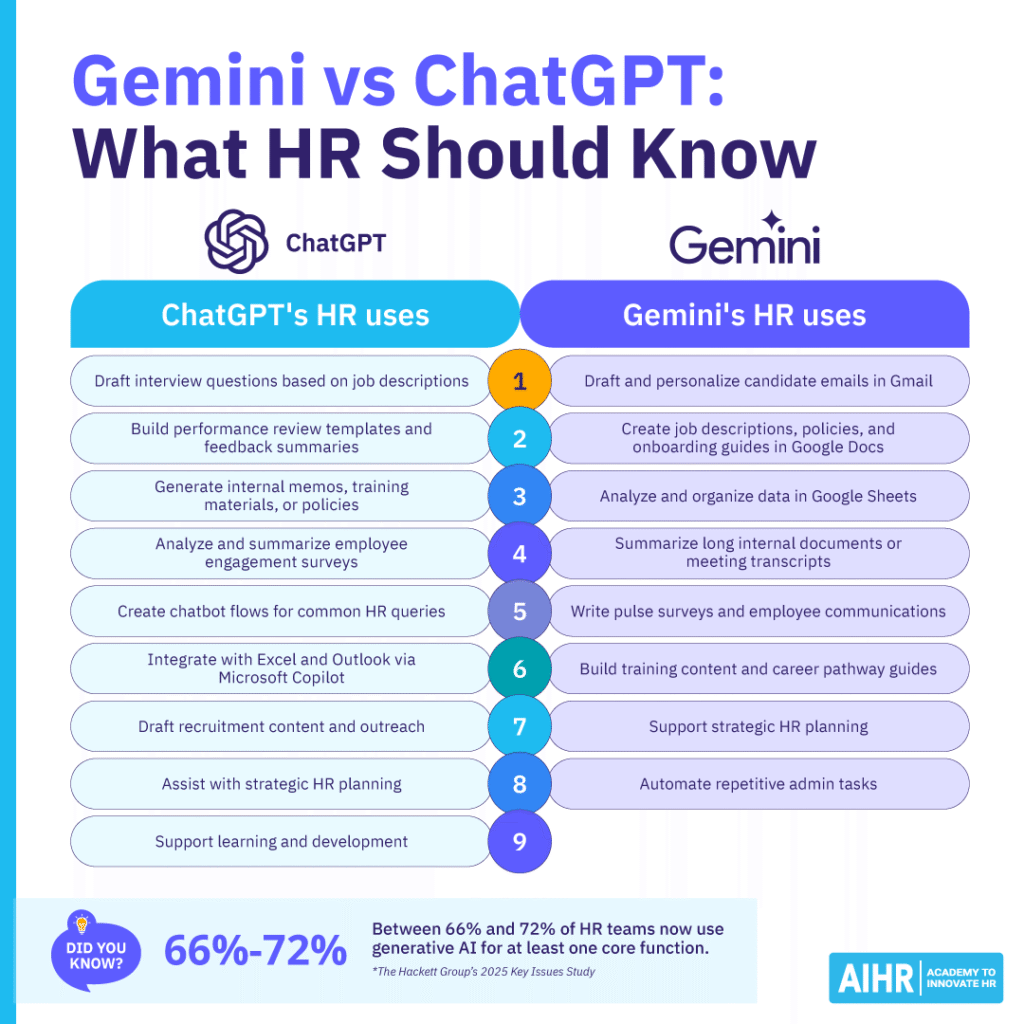
How HR teams can choose between ChatGPT and Gemini
The decision to choose either platform depends on which one aligns best with your organization’s tools, workflows, and compliance priorities. It’s also worth noting that since AI is evolving rapidly, you should research and revisit different AI platforms fairly regularly. Here are some tips that can help you make the right choice:
Start with your tech stack
If your HR team already uses Google Workspace, Gemini integrates seamlessly and requires minimal IT intervention. If your team operates on Microsoft 365, ChatGPT via Copilot will feel more natural and can reduce change management friction.
Match the AI to your workflows
Use Gemini for labor-intensive, time-consuming tasks like summarizing policies or analyzing data. If your team focuses more on creative tasks (e.g., creating outreach emails or training content), ChatGPT is helpful — especially with ChatGPT 4o’s voice/image features.
Evaluate privacy and compliance needs
If your HR data already lives in Google Cloud, Gemini may simplify compliance. On the other hand, if you rely on Microsoft’s Azure or other hosted services, ChatGPT may be a better fit, as it can integrate more smoothly with your organization’s existing security policies.
Assess integration requirements
ChatGPT currently supports more third-party plug-ins and ATS integrations, while Gemini is more tightly bound to Google’s ecosystem. If your recruitment tech stack relies on job boards, scheduling apps, or ATS, ChatGPT may offer faster deployment.
Factor in cost and scalability
Start with free or trial versions and measure time saved per task (e.g., how many hours Gemini saves on policy update summaries, or how many ChatGPT saves on candidate outreach). Once you see measurable ROI, you can justify upgrading your plan.
Test both in parallel
Consider piloting both tools simultaneously for one to two months (e.g., use Gemini to condense a 100-page HR report and ChatGPT to turn the summary into employee-facing FAQs or scripts). The side-by-side comparison will reveal which better fits your workflows.
Stick with your current ecosystem for security and simplicity
If minimizing IT complexity and data risks is your top priority, choose the AI platform that aligns with your current environment (Google for Gemini and Microsoft for ChatGPT), rather than adding another platform that will cost more time, effort, and money.
Consider multi-modal and accessibility needs
If your HR team needs to process images, voice notes, or visual data (like résumés, org charts, or scanned contracts), ChatGPT 4o is the more advanced option, as it can transcribe and analyze images and voice. Gemini’s focus is primarily text and data analysis, though its multi-modal features are evolving.
Explore collaboration features
Gemini supports real-time collaboration on AI-assisted drafts. For example, multiple HR team members can co-edit a Gemini-generated onboarding guide. ChatGPT, however, integrates more indirectly, with outputs typically pulled into Word, Excel, or Teams.
Examine AI transparency and explainability
Explainability is critical for HR processes like candidate scoring, compliance documentation, or policy updates. Gemini’s Google Cloud integration supports easier auditing of AI outputs, which can help satisfy compliance officers. ChatGPT, while enterprise-ready, may require additional configuration or third-party tools to meet strict audit requirements.
Next steps
As more HR teams adopt generative AI, focus on the tool or platform that best fits your workflows. Gemini works best with Google Workspace and excels at document-heavy tasks. ChatGPT pairs well with Microsoft 365 and shines in creative, multi-modal tasks. Used correctly, both can save time, reduce admin, and boost efficiency.
Start with what you already use. If your team runs on Google or Microsoft, test the AI that fits your environment. Run a short trial, compare results, and scale based on ROI. Need help getting started? Explore AIHR’s Certificate Programs to build GenAI skills and use these tools with confidence.


